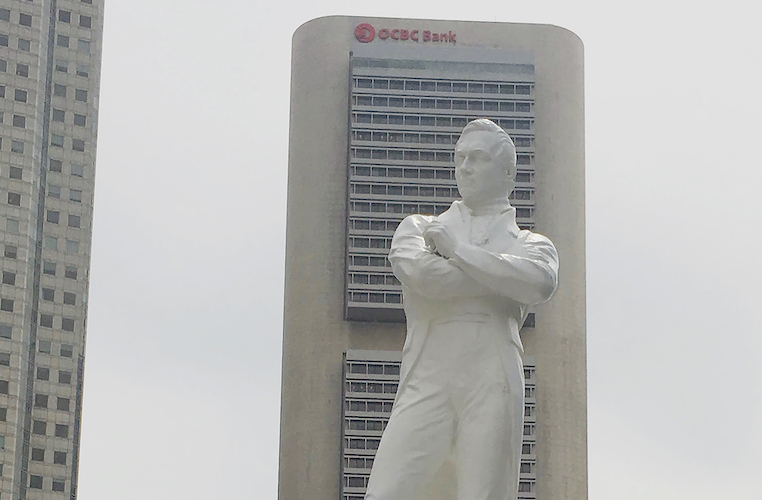200 years since Sir Stamford Raffles stepped onto our shores and had a sculpture erected in his likeness, Singapore finally installed statues of other figures that deserve as much (if not more) recognition and reverence for playing pivotal roles in our history. Raffles was a monumental dick who took credit for Singapore’s success — achievements that should be attributed to his second-in-command William Farquhar, by the way.
We digress. As part of the commemorations in the Singapore Bicentennial — the 200th anniversary since Raffles arrived in 1819 — four new effigies have been set up at the Raffles Landing Site: Sang Nila Utama, Munshi Abdullah, Tan Tock Seng, and Naraina Pillai. Yes, there’s more to Singapore’s history than the usual spiel involving Raffles and first prime minister Lee Kuan Yew. “Even the four statues represent only a fraction of the huge cast of characters who contributed to the evolution of Singapore in our longer history of 700 years,” said Gene Tan, Executive Director of the Singapore Bicentennial Office.

Sang Nila Utama: The Srivijayan prince from Palembang who in 1299 sailed through stormy waves from Bintan island to here, which was then known as Temasek. During his visit, he apparently saw a lion (even though lions are in no way native to Singapore) and took it as a good omen. Thus he built this city on* rock and roll * with his men and renamed the country Singapura, meaning “Lion City” in Sanskrit.
Munshi Abdullah: The Malaccan linguist who became an accomplished Malay scholar by the age of 14 and was hired by Raffles as a copyist in 1810 — it is believed that he tutored the Englishman in the Malay language and culture. Nine years later, he journeyed to Singapore, where he became Raffles’ secretary and interpreter. He continued to reside here and taught Malay to merchants, missionaries and businessmen. Later on he wrote an autobiography called the Hikayat Abdullah (The Story of Abdullah) that became a source for the social history of Singapore in the 19th century.
Tan Tock Seng: One of the most prominent figures of the Chinese community who came to Singapore. Moved from Malacca to Singapore in 1819 to sell produce and other wares, growing his business to a successful enterprise. His ventures soon saw him owned acres of land, properties, and shophouses. With the money he made, he made generous contributions to charity — the most notable one being a $5,000 donation to the building of the Chinese Pauper Hospital, now known as Tan Tock Seng Hospital. He also founded the Thian Hock Keng Temple at Telok Ayer, the country’s oldest temple. He became known as the “Captain of the Chinese” for his reputation in helping Chinese immigrants settle in Singapore.
Naraina Pillai: Known as the first Indian to set for in Singapore in 1819, he left Penang after he was attracted by Raffles’s vision for the country. He started out as the chief clerk at the treasure, where he checked coins for authenticity. After he was discharged, he started Singapore’s brick company and became the first Indian building contractor in the country. Raffles provided him with prime land at Commercial Square (now known as Raffles Place), and Naraina helped build Sri Mariamman Temple. He became a leader of the Indian community and was appointed with the authority to settle disputes among Tamils.
Initial criticism
Following the announcement of the SG Bicentennial campaign last year, folks weren’t too happy that there’d be a year-long campaign to celebrate our colonial overlords. After all, it would be unfair to view our colonial era through rose-tinted glasses despite the exploitative, racist and often-times savage nature of colonialism.
The government, however, has been careful not to call it a celebration. The events planned will not only look at Singapore’s history post-Raffles, but also the 500 years before his arrival.
“While most might associate the Singapore Bicentennial with only the British and 1819, the appearance of the four additional statues clearly articulates the approach we are taking for this year-long effort. 1819 is an important point in our history, but before and after the British also came many people and communities,” Tan explained.
“Through the various events planned throughout 2019, we hope that Singaporeans will be able to broaden their understanding of how different communities, including their own, had a part to play in Singapore’s history.”





Reader Interactions